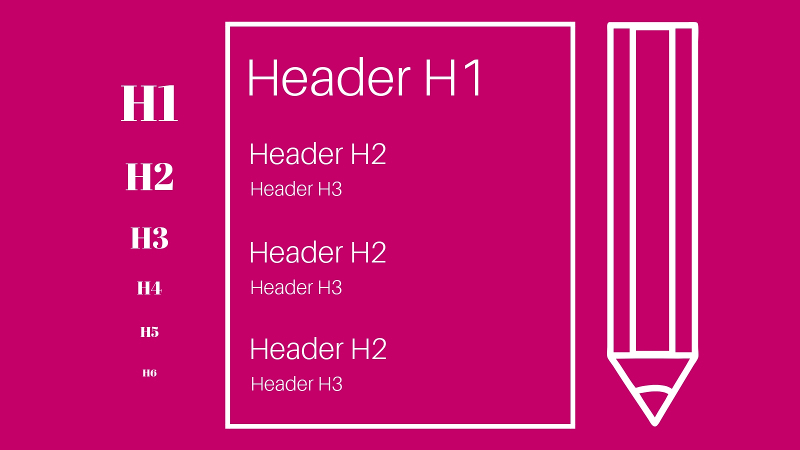
Website optimization consists of many elements, one of which is the use of appropriate structure, which can be obtained using HTML headers. How to use headers on a website in order to make its structure correct?
The role of website headers
HTML headers on the website make the texts readable for people and provide a structure that is easy to interpret for web browser robots.
There are 6 types of header tags from H1 to H6. Letter H stands for Heading, and numbers from 1 to 6 determine its hierarchical importance.
How many header tags can be used per page?
H1 header is like a book title, its purpose is to inform the reader what the content concerns, so we should use only one tag of this type on one page. Apart from the already mentioned single use of H1 tag, there is no rule as to the number of other tags used, but due to the importance of particular types of headers, we should keep moderation and take an example from an orderly arrangement of newspapers or scientific papers, where the title (our H1) is only one, then we see subtitles or titles of chapters (H2), and the developing titles of subtitles are marked with smaller font (H3), and rarely we deal with subsequent levels of subdivision (H4-H6).
It is said that you can use as many H1 as you want
In April 2017, on Twitter, John Mueller from Google, asked with regard to SEO about how many H1 tags should be used on one page, he replied: "As many as you want." Of course, no one will prevent us from entering any number of H1 headers, but it will lose its meaning and may be misinterpreted by web browsers. Microsoft in the guidelines for its browser – Bing (Bing guidelines) clearly indicated that header tags are used to show the structure of document and only one H1 tag should be on one page. Using H1 header we should focus on emphasizing important things and limit the use of this tag, and it will certainly help us not only in SEO aspect of our website, but also in the reception of presented content by users.
How to use HTML header tags?
Why use header tags on the page?
Headers certainly support SEO activities, but using them on the website is not necessary, the rank of text can be defined by other tags such as <strong> or <em>. However, it is worth to use them, because the structure created with header tags will certainly make it easier for Google to understand what the content of a given page is, and for the recipients of our content it will make reading more pleasant.



